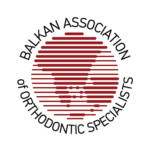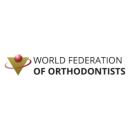Kurset përpara kongresit
No-compliance Class II treatment with the use of TADs
Dr. Cesare Luzi

Dental degree at the University of Rome “La Sapienza”. Postgraduate education and Master of Science in Orthodontics at the University of Aarhus, Denmark. Founder and first President of the European Postgraduate Students Orthodontic Society (EPSOS). Past President of the Italian Society of Biomechanics (SIBOS). Past-President of the Italian Association of Specialists in Orthodontics (ASIO) 2018-19. Active member of SIDO (Italian Society of Orthodontics). President elect AIdOr (Italian Academy of Orthodontics) 2022. Member of the EOS (European Orthodontic Society) and WFO (World Federation of Orthodontists). Winner of the Houston Research Award of the EOS (2006) and of the First Prize Award for Clinical Research of SIDO (2006). Winner of the Beni Solow Award of the EOS 2010. Diplomate of the Italian Board of Orthodontics and the European Board of Orthodontics. Visiting Professor University of Ferrara and University of Rome Cattolica (Italy). Private practice in Rome, limited to orthodontics.
Abstract
Introduction: For decades the use of extra-oral tractions and functional appliances has represented the most common solution for treatment of class II malocclusions. At present, the advent of straight-wire mechanics and no-compliance devices had completely changed our approach to the problem.
Aim: The aim of the course is to focus on diagnosis and treatment timing of class II malocclusion, in order to understand no-compliance protocols and related anchorage control.
Materials and Methods: Several treatment strategies will be described through case reports highlighting the use of different appliances (Intra-oral distalizers and Herbst appliance) and their possible association to orthodontic miniscrews to optimize treatment results.
Conclusions: The possibility of eliminating the variable of patient compliance, both for maxillary molar distalization and for mandibular advancement, has given the opportunity of generating more predictable and reliable results reducing treatment duration. The recent introduction on the market of TADs has furthermore improved treatment protocols allowing absolute anchorage control, and their association to no-compliance for class II correction opened a new frontier in treatment strategies increasing treatment success rates.
Risk management in orthodontic treatment
Prof. Moschos A. Papadopoulos

Part I. (60 min)
Diagnostic failures, dilemmas and treatment alternatives in Orthodontics
Part II. (60 min)
Clinical performance of orthodontic miniscrew implants
Part II. (60 min)
Risks and complications of Temporary Anchorage Devices (TADs) in Orthodontics
Abstract
Proper diagnosis is especially important in order to achieve the correct and wished orthodontic treatment outcome. Depending on the diagnostic parameters of the various orthodontic problems there are interventions that either have to be performed or should be avoided. Failure to receive or/and analyze diagnostic data can lead many times to failure or even worse in iatrogenic effects. Further, it is also very important to take into consideration the fact that actually diagnosis should be considered as a continuous process in orthodontics, which should be repeated at each patient appointment.
Currently, skeletal or temporary anchorage devices (TADs) constitute a compliance-free alternative to conventional anchorage systems. Present literature suggests that skeletal anchorage devices, such as orthodontic implants or miniscrew implants which are fixed to the bone, can provide a more stable anchorage than conventional methods and thus, they can be used clinically to enhance anchorage support.
However, evidence regarding the survival and clinical effectiveness of miniscrew implants is modest at the time. This lecture will present and discuss data from systematic reviews and meta-anayses of prospective studies on the use of MIs providing evidence on the effectiveness and the failure rates of MIs, as well as the risk factors associated with MI failures. Unfortunately, adequate evidence exists only for a handful of these factors. Additional high quality studies large-scale are needed to provide the orthodontic community with more reliable evidence and further clarify the association of the various factors with miniscrew implants failures
Nevertheless, the clinical use of TADs is associated with potential side effects (i.e., unwanted effects that are generally predictable and expected) or/and complications (i.e., unwanted and unexpected events due to treatment), which can occur during their insertion, use, or removal.
Aim of this presentation is to present and discuss the importance of initial and itermediate diagnosis, the effectiveness and the failure rates of miniscrew implants, and the potential side effects and complications associated with the clinical use of TADs when they are used to support anchorage during orthodontic treatment.

Shoqata e Ortodontëve Shqiptarë është një organizatë jo fitimprurëse në fushën e ortodoncisë e themeluar në vitin 2006. Kjo shoqatë është anëtare me të drejta të plota në Shoqatën Ballkanike të Specialistëve Ortodontë (BAOS) dhe pjesë e anëtarëve në Federatën Europiane të Ortodoncisë (FEO) dhe Federatën Botërore të Ortodoncisë (WFO)
Rruga Dëshmorët e 4 Shkurtit, Pallati 7, Apartamenti 13, Tiranë, Shqipëri 1000



Shoqata e Ortodonteve Shqiptare © All Rights Reserved 2022